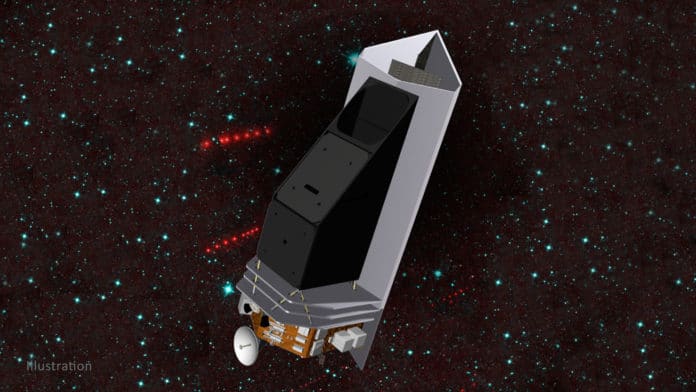Protecting Earth from the dangers of asteroid collisions has taken it one step further after NASA approved the continued development of the Near-Earth Object Surveyor space telescope (NEO Surveyor) after a successful mission review.
The infrared space telescope is a part of NASA’s planetary defense efforts to discover and characterize most of the potentially hazardous asteroids that come within 30 million miles of Earth’s orbit, collectively known as near-earth objects, or NEOs.
The asteroid-hunting space telescope will significantly speed up the agency’s ability to find the comets. “NEO Surveyor will have the capability to rapidly accelerate the rate at which NASA is able to discover asteroids and comets that could pose a hazard to the Earth, and it is being designed to discover 90% of asteroids 140 meters in size or larger within a decade of being launched,” said Mike Kelley, NEO Surveyor program scientist at NASA Headquarters.
The agency is working to achieve this directive and has currently found approximately 40% of near-Earth asteroids within this size range.
When it comes to potentially life-threatening asteroids, Earth’s best defense is early detection. Detecting potentially hazardous NEOs as early as possible is crucial in ensuring that deflection or other preparations for impact mitigation can be carried out in time.
The agency plans to test one such deflection technology called Double Asteroid Redirection Test (DART) mission, to be launched later this year. The mission is intended to test whether a spacecraft impact could successfully deflect an asteroid on a collision course with Earth.
NEO Surveyor isn’t going to tussle with any asteroids. Using sensors that operate in the infrared, NEO Surveyor would help planetary scientists discover NEOs more quickly, including ones that could approach Earth during the day from closer to the sun’s direction. This is something that is not currently possible using ground-based optical observatories.
“By searching for NEOs closer to the direction of the Sun, NEO Surveyor would help astronomers discover impact hazards that could approach Earth from the daytime sky,” said Amy Mainzer, principal investigator for NEO Surveyor at the University of Arizona. “NEO Surveyor would also significantly enhance NASA’s ability to determine the specific sizes and characteristics of newly discovered NEOs by using infrared light, complementing ongoing observations being conducted by ground-based observatories and radar.“
NEO Surveyor’s approval to move to this next mission milestone brings the telescope one step closer to launch, which is currently scheduled for the first half of 2026.
